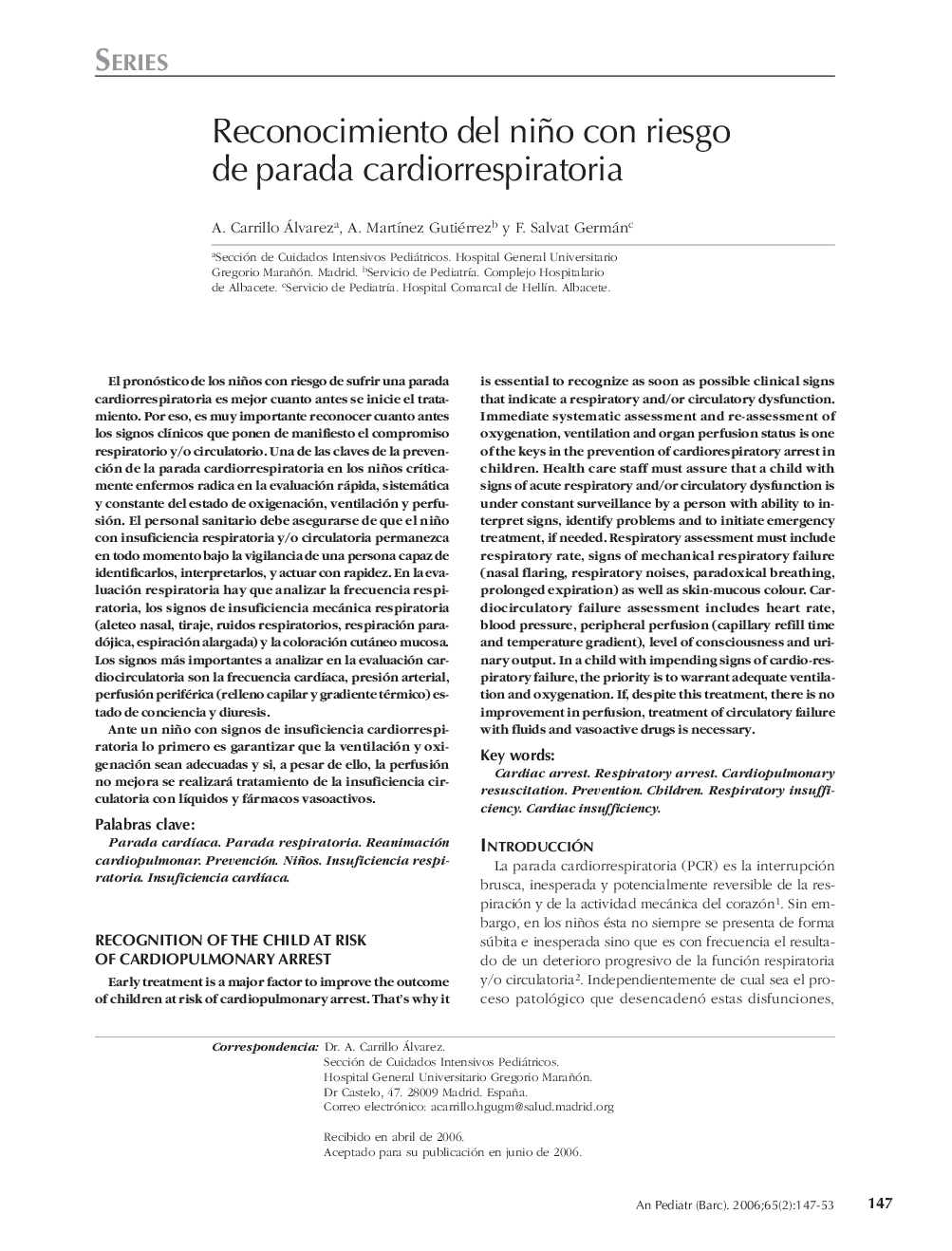| Article ID | Journal | Published Year | Pages | File Type |
|---|---|---|---|---|
| 4143764 | Anales de Pediatría | 2006 | 7 Pages |
Abstract
Early treatment is a major factor to improve the outcome of children at risk of cardiopulmonary arrest. That's why it is essential to recognize as soon as possible clinical signs that indicate a respiratory and/or circulatory dysfunction. Immediate systematic assessment and re-assessment of oxygenation, ventilation and organ perfusion status is one of the keys in the prevention of cardiorespiratory arrest in children. Health care staff must assure that a child with signs of acute respiratory and/or circulatory dysfunction is under constant surveillance by a person with ability to interpret signs, identify problems and to initiate emergency treatment, if needed. Respiratory assessment must include respiratory rate, signs of mechanical respiratory failure (nasal flaring, respiratory noises, paradoxical breathing, prolonged expiration) as well as skin-mucous colour. Cardiocirculatory failure assessment includes heart rate, blood pressure, peripheral perfusion (capillary refill time and temperature gradient), level of consciousness and urinary output. In a child with impending signs of cardio-respiratory failure, the priority is to warrant adequate ventilation and oxygenation. If, despite this treatment, there is no improvement in perfusion, treatment of circulatory failure with fluids and vasoactive drugs is necessary.
Keywords
Related Topics
Health Sciences
Medicine and Dentistry
Perinatology, Pediatrics and Child Health
Authors
A. Carrillo Álvarez, A. MartÃnez Gutiérrez, F. Salvat Germán,
